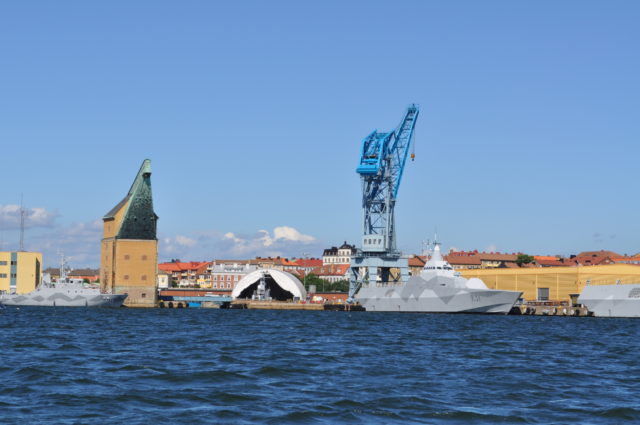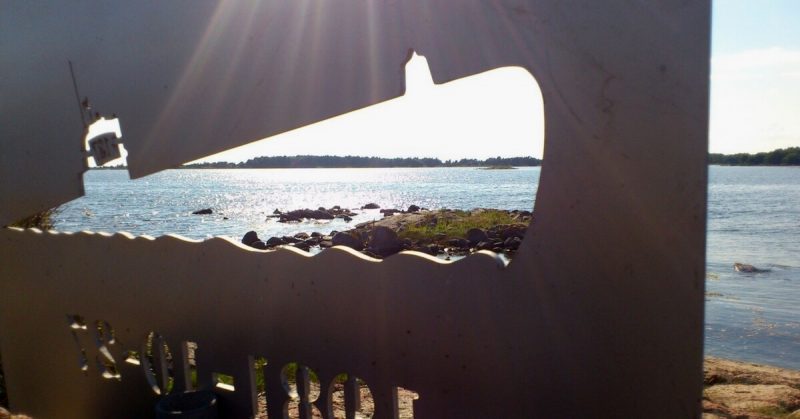In October 2014, the Swedes were angry over an alleged Russian submarine within their territorial waters. As their panic was based on a grainy photo that could have been anything, they became open season for comedians.
In the aftermath of WWII and with Cold War tensions rising, America created the North Atlantic Treaty Organization (NATO) in 1947. The idea was to surround the Soviet Union with member NATO nations to contain the communist threat.
NATO remained an idea, but the practical details were vague until the Korean War broke out in 1950. North Korea had invaded South Korea with Soviet and Chinese backing – proving that the communist threat was real.
Terrified who might be next, several European countries jumped on the NATO bandwagon. Given how close they are to the Soviet border, the Scandinavian countries of Norway and Iceland did likewise, while Finland did through NATO’s Partnership for Peace program.
Sweden declined although it did join some NATO exercises over the years. However, since the 1960s it may have had several close calls with Soviet submarines.
In 1962 during a military exercise off Fårö Island at Gotland, Swedish radars detected submarines within their waters. Depth charges were dropped and they left.
Another was seen on and off for 24 days in 1966. In 1969, a Swedish sub came into contact with an unidentified other, which fled. It took a destroyer to make another leave in 1974 and again in 1976. A repeat of 1966 happened in 1980 when the Swedes spent weeks hunting down a sub in its waters, again to no avail.
It was never established which nation any of those subs had originated from. However, during the Cold War era, it was assumed they were Russian. Then an incident occurred that really set the Swedes on edge; involving whiskey.
A Soviet Navy Whiskey-class submarine that is. Launched in 1957 from the Ordzhonikidze Yard in Leningrad and given the catchy name of “S-363,” it made its way to Sweden sometime in 1981.
It hit a rock on October 27 near the southern coast of Blekinge Country – some six miles from the Karlskrona Naval Base. Coincidentally at the time, the Swedes were doing a naval exercise to test new equipment.
Due to those rocks, the sub was identified. The Swedes invited the sub’s captain of his vessel for questioning. To minimize increasing political tensions, Soviet representatives were allowed to sit in on the interview.
The captain claimed his navigation system had screwed up – although it had guided them through several Swedish straits and islands. They also claimed not to know there was a Swedish Naval Base nearby. His political officer, on the other hand, thought they were near Bornholm Island in Denmark.

The Soviet Navy claimed the sub was in severe, life-threatening distress; although no distress call had been sent. A rescue operation led by the Obraztsovy – a Kashin-class destroyer and escorted by two Nanuchka-class corvettes, a Kotlin-class destroyer, a Riga-class frigate, and a tugboat – all headed toward Karlskrona.
Sweden’s center-right government was in trouble. It had compromised on the issue of nuclear power with the pro-nuke Moderate Party, leading to widespread public outrage. Hoping to show they could at least be tough on the subject of borders, they ordered all coastal batteries to aim at the Soviet rescue fleet – which continued its approach.
The Swedes aimed their fire control radar at the ships, changing their frequencies to prevent the Soviets from jamming them. It worked – the fleet returned to international waters; except the tugboat which kept on coming. The Swedes greeted it with three Spica Class torpedo boats which stopped its progress.
The sub’s logbooks and instrumentation were also looked at, while the Swedish National Defense Research Institute pinged the craft with gamma ray spectroscopy. It was as they had suspected – the torpedoes were armed with uranium-238 meaning they were nuclear. Events then turned really interesting.
The weather deteriorated, and the sub finally sent out a distress signal. Two ships veered out of international waters, crossed into Swedish maritime territory, and headed toward Karlskrona. They had come from the direction of the Russian fleet.
Sweden’s Prime Minister ordered the borders held. The Navy prepped its coastal artillery guns and mine stations. The military went on even higher alert. The air force scrambled planes to the area despite the foul weather.
For the next 20 minutes, Sweden held its breath.
False alarm. The Russians were not invading – the Germans were. The two incoming ships were German merchant vessels.
Everyone heaved a sigh of relief. Except for the Soviets. Their Whiskey stayed on the Swedish rock until November 5 when tugboats finally hauled it back to international waters for the Soviets to pick up.
It did not end there. More sightings followed, although again none could be identified. In 2011 a raft frozen in ice caused another panic. Again in 2015 when they found a real Russian sub… which had sunk in Swedish waters in 1916.
Submarine panic continued to grip Sweden until the Swedish Peace and Arbitration Society (SPAS) had had enough.
On April 27, 2015, they launched their own defensive network – the Singing Sailor Underwater Defense System, better known as the “gay sailor.” It is a neon sign with a half-naked dancing sailor surrounded by hearts.
In case the Russians do not understand, it emits a Morse code signal in English and Russian which states: “This way if you’re gay.”
It also has a written message which reads: “Welcome to Sweden: Gay since 1944” (Sweden decriminalized homosexuality that year). Given Russia’s increasingly anti-LGBT laws, it might be more effective than NATO and the Swedish defense network.
